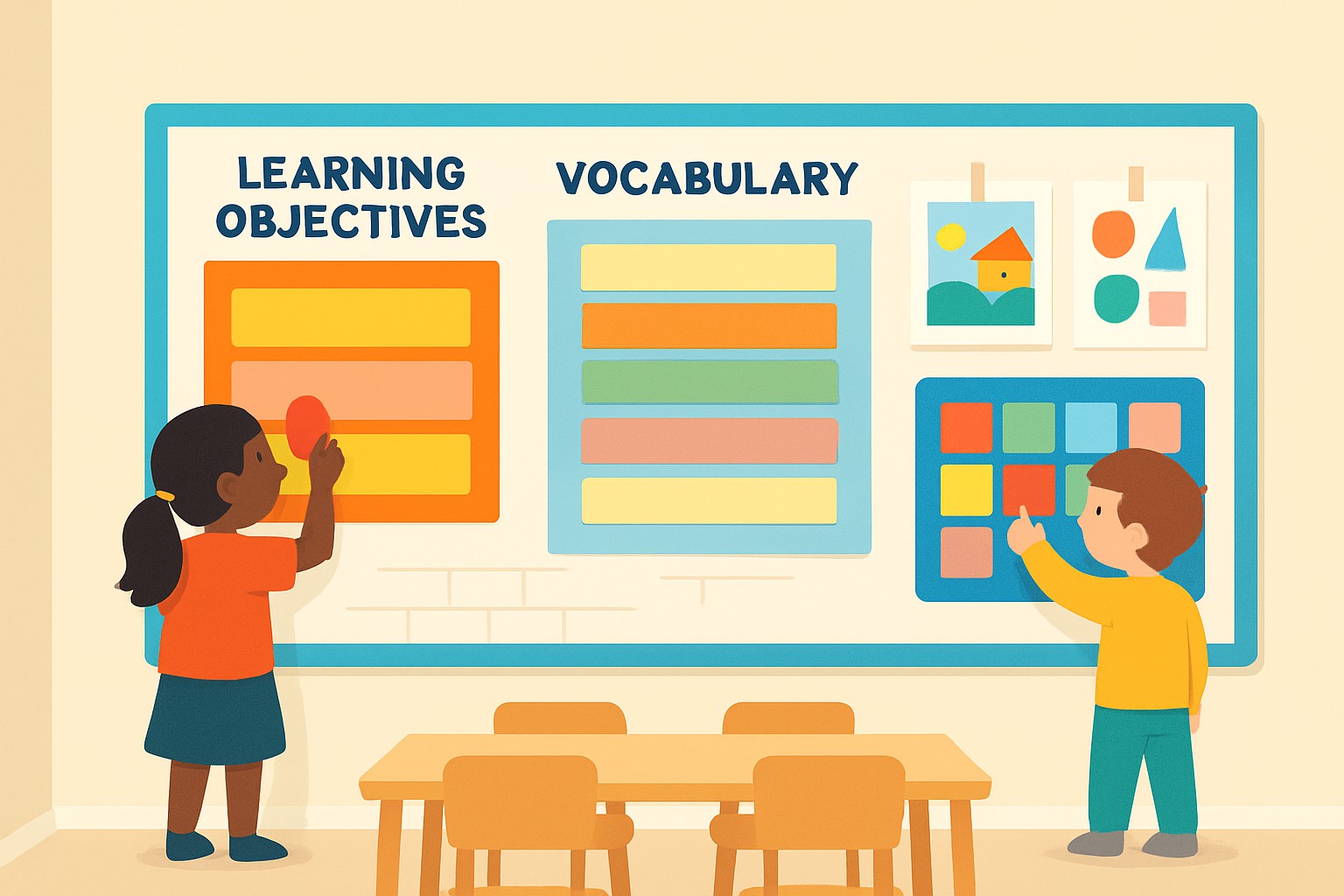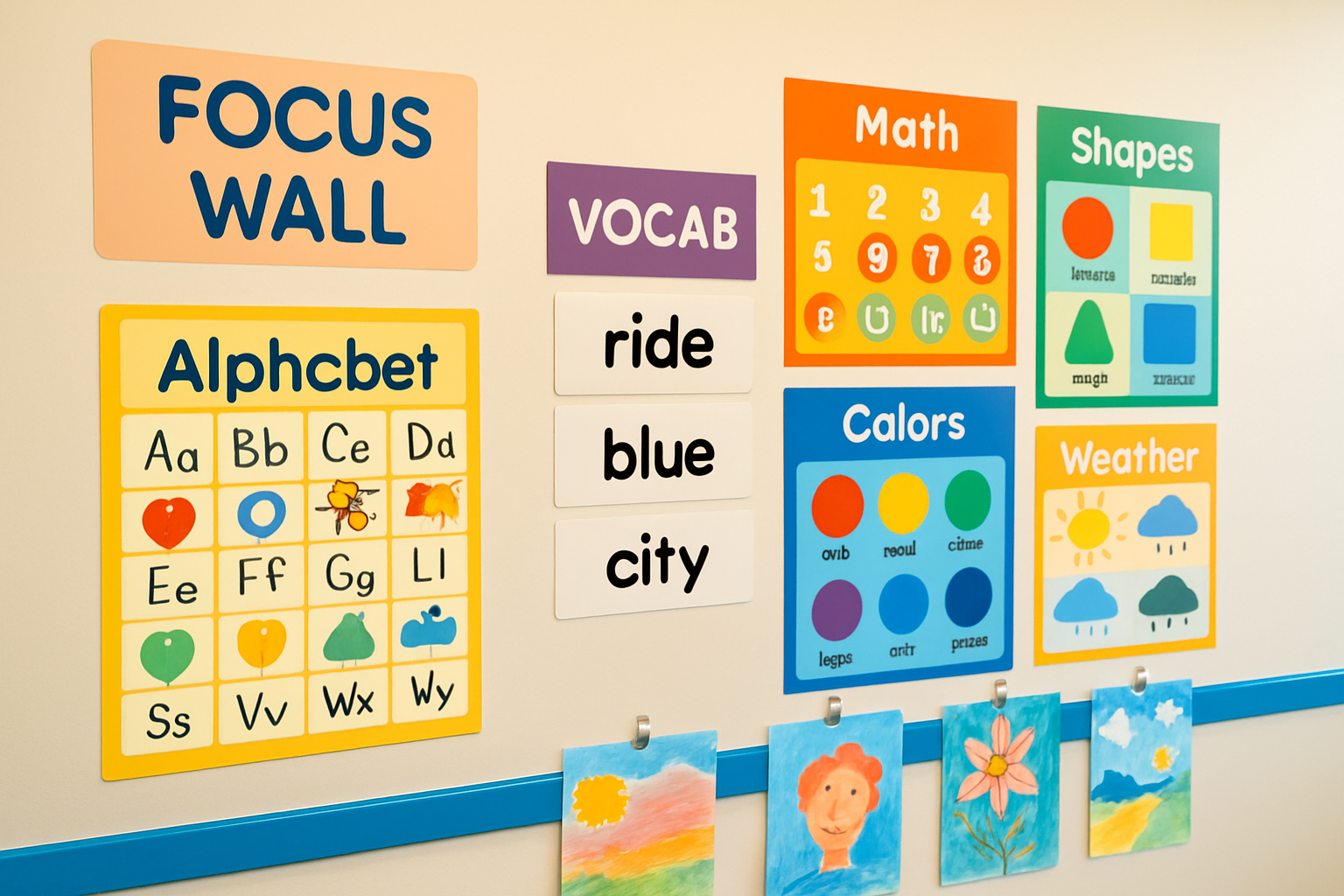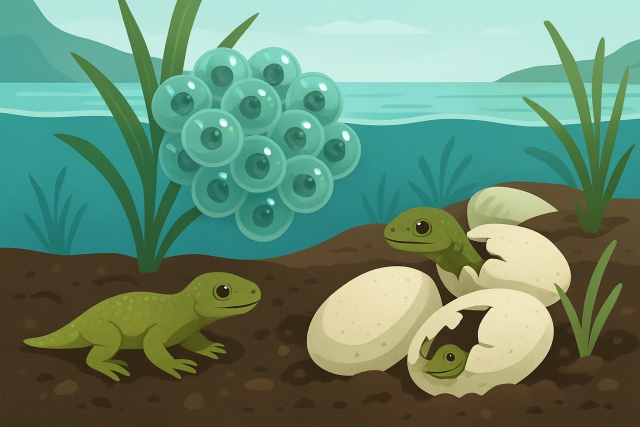Creating a Focus Wall That Engages Students

Focus walls act as a lively interactive classroom tool designed to catch students' eyes and give them a clear roadmap of what’s expected in their learning journey. By gathering key information, objectives and resources in one place, focus walls boost engagement and tidy up the chaos. They help students zero in on the most important learning goals during lessons.
This guide explains what a focus wall is and highlights its benefits. It also shares best practices for creating and maintaining one that supports student learning.
Focus Walls and Their Importance in Education
A focus wall is a designated spot in the classroom where teachers proudly display key information related to the current learning goals. Think of it as a visual roadmap that calls out daily objectives and essential vocabulary along with materials needed for each lesson. When this info is laid out clearly it helps students grasp the material better and fires up their motivation.
- Focus walls serve as a handy visual tool, spotlighting key concepts throughout the day so nothing important slips through the cracks.
- They naturally boost student motivation by clearly laying out learning goals and showcasing progress, which makes the whole effort feel a bit more rewarding.
- Lessons often tie in nicely with the material on display, helping to reinforce what’s being taught in a way that just sticks better.
- Focus walls also lend a hand with classroom management, providing a comforting sense of routine and structure that keeps things running smoothly.
- They cater to diverse learning needs by offering tailored resources, making sure no student feels left behind.
- With interactive elements linked to their own goals, students tend to take more ownership of their learning—something that’s pretty rewarding to see in action.
Planning Your Focus Wall with Key Tips from Experience
Planning well is the secret to crafting a focus wall teachers and students will genuinely connect with. Begin by scouting your classroom for a spot that is visible and easy to get to. Tie the focus wall content closely to your curriculum goals and keep your students' unique needs front and center. Design a clear visual layout so the key points stand out and grab attention.
Find a well-known and easily accessible wall that will catch every student's eye.
Highlight the current learning goals and curriculum standards to focus on what really matters.
Choose themes like math, literacy or social studies to keep things meaningful.
Add interactive touches like question prompts or examples of student work to make it come alive.
Set up a regular schedule to refresh the display so it never gets stale or overlooked.
Gather all your materials first, including borders, labels and display tools, so you’re not scrambling halfway through.
Creating a Focus Wall That Really Catches the Eye with Tips on Arranging and Boosting Visual Appeal
A well-designed layout doesn’t just grab students’ attention—it helps them soak up information naturally. Pick color schemes that play nicely together and fonts that won’t make you squint. Space things out with breathing room to create a smooth balanced rhythm. Use headers and borders to call out important stuff without turning the wall into a chaotic mess or a boring blank slate.
- Use vibrant colors thoughtfully to highlight key sections without overwhelming the eyes. Think of it as jazzing up the space just enough to catch attention but not so much that it feels overpowering.
- Choose fonts that are consistent and easy to read throughout all text elements because nobody wants to squint or guess what is written.
- Use bold clear headings to break information into well-organized topic-based sections that make scanning easy.
- Arrange the wall so related materials sit close to each other making navigation feel natural instead of like a scavenger hunt.
- Add charts and images to engage different learning styles since not everyone absorbs information the same way.
- Keep the space uncluttered to reduce distractions and help maintain focus like clearing the desk for a fresh start.
Key Elements for Your Focus Wall and Why They'll Make You Smile
Your focus wall content should line up neatly with your students' grade level and the subjects you teach, but there are a few key categories that really seem to give learning a nice boost. Throwing in everything from daily objectives to student contributions keeps the wall lively and far from boring, striking that perfect balance between informative and motivating. Picking and choosing what makes the cut is a bit of an art.
- Daily learning goals that lay out exactly what students should aim to master by the end of each lesson—no guesswork involved.
- Key vocabulary words with clear definitions and helpful illustrations to cement understanding and make the subject stick.
- Examples of student work that proudly showcase progress and celebrate the effort behind it.
- Anchor charts that sum up important concepts and handy strategies, perfect for quick reference when things get tricky.
- Schedules and calendars that help keep routines on track and ensure no important events sneak up unexpectedly.
- Motivational quotes crafted to inspire a growth mindset and keep the spirit of perseverance alive.
- Clear criteria for assessment so students know exactly how their work will be judged, leaving no surprises.
Sprinkling in Interactive and Student-Centered Elements
Really kick student engagement up a notch by sprinkling in some interactive bits that invite participation and spark reflection. Giving students the chance to chip in content or chime in on prompts transforms the focus wall from a static board into a lively, breathing part of the classroom’s ever-changing learning scene.
- Kick things off with a daily question or a little brain teaser tied to the lesson—something to spark curiosity and get conversations flowing naturally.
- Set up a student goal tracking area where learners can easily keep tabs on their progress and update it as they go along. This really helps them see how far they have come.
- Include a suggestion box so students feel comfortable sharing their ideas or feedback about class activities. It’s amazing what fresh perspectives appear when you give them the chance.
- Rotate the displays of student work regularly to proudly showcase achievements and keep the classroom vibe lively and inspiring.
- Bring in some hands-on manipulatives or magnetic words that students can physically move around during lessons. It’s a great way to keep their hands and minds busy at the same time.
- Throw in interactive charts or graphs that students get to update themselves as they work through a unit. This makes tracking progress feel more like a game, which is always a win.
Materials and Tools You’ll Need to Build Your Focus Wall (Because Getting Organized Shouldn’t Be Rocket Science)
Picking the right materials and tools is key when crafting a focus wall that’s both useful and easy on the eyes. You start with basics like bulletin board paper and borders that lay the groundwork. Adding a bit of technology and interactive elements creates more flexibility and keeps things fresh. Using durable and reusable materials saves time and resources over several school years.
- Large rolls of bulletin board paper in a rainbow of colors to craft bright, eye-catching backgrounds that really draw attention.
- Decorative borders that neatly frame sections and add just the right touch of flair to perk things up.
- Sticky notes and index cards that offer flexible spots for content you can swap out on a whim—perfect for staying nimble.
- Magnets or push pins that let you quickly attach and shuffle things around without any hassle.
- Printed anchor charts that shine a spotlight on the most important concepts and strategies, making them hard to miss.
- Laminated poster sets built tough for durability and plenty of repeated use.
- Digital displays or tablets that bring a splash of interactivity to lessons, keeping things fresh and engaging.
- Velcro strips that make it super easy to attach student work and manipulatives, so you can change things up in a snap.
A Straightforward, Step-by-Step Guide to Crafting Your Focus Wall (Because We Could All Use a Little More Clarity)
Building an engaging focus wall takes a bit of thoughtful planning from start to finish. Following a clear process not only helps make the wall visually appealing but also keeps it well-organized and super easy for both students and teachers to navigate.
Give your chosen wall area a thorough clean—think of it as prepping a blank canvas ready for fresh creativity.
Pick a vibrant bulletin board paper background that ties the space together and makes things pop.
Use a clear bold header or title that shouts what the wall is about so no one’s left scratching their heads.
Arrange your content sections so they make sense, grouping related items together to be easy on the eyes and brain.
Add some interactive bits like question strips or pockets for student work to keep everyone engaged.
Give the entire wall a once-over to ensure your fonts and colors play nicely and are easy to read.
Wrap it up with details like borders and decorative touches that invite people to stop by and take a closer look.
How to Keep Your Focus Wall Fresh and Up to Date
A focus wall really shines when it’s kept up to date and given a little TLC on the regular to keep pace with the ever-changing classroom curriculum. Keeping things fresh and relevant isn’t just a nice-to-have—it’s what helps students stay genuinely engaged and ensures the wall pulls its weight in supporting those learning goals.
- Make it a habit to update the focus wall regularly so it stays in sync with your lesson plans and units. Keeping things fresh is key.
- Invite students to pitch in with adding or swapping materials because turning it into a group effort makes everyone feel more invested.
- Rotate seasonal or themed content now and then to keep both the eyes and minds intrigued. It beats staring at the same old thing.
- Promptly fix any wear or damage. A neat and inviting display really makes a difference, trust me.
- Don’t hesitate to gather feedback from students and colleagues alike since their input can turn a good focus wall into a truly effective one.
Typical Challenges and How to Overcome Them When Designing Focus Walls A Few Tips That Might Just Save the Day
Focus walls bring clear benefits to the table but educators often face a few hurdles when setting them up. The usual suspects are cramped spaces and racing against the clock to prepare. Keeping students genuinely engaged as time goes on is another challenge. Budget pressures and accessibility needs add twists that shape how well a focus wall performs.
- When wall space is limited, portable focus walls or smaller modular sections often help you manage the display area without breaking a sweat.
- Those time limits can feel like a ticking clock but if you prepare reusable templates ahead of time or get help from students, it can really take the edge off.
- Keeping students involved with interactive elements boosts their sense of ownership and tends to keep them genuinely engaged—win win.
- You can keep material costs from spiraling by picking budget-friendly supplies and using digital tools—they're often a lifesaver.
- Make sure everyone can access the content by displaying it at the right heights and using clear visuals that work for all learners so no one feels left out.
"A focus wall that truly works isn’t just something you slap on the wall; it grows into a living, breathing part of your classroom vibe. When students interact with it day in and day out, it stops being mere background and gradually becomes their trusty learning sidekick." – Jamie Diaz, Veteran Educator and Curriculum Specialist
Ways to Gauge How Your Focus Wall Really Clicks with Student Engagement and Learning
Checking how well your focus wall is doing is key to making sure it supports student learning and keeps their attention alive. By examining observations and gathering student feedback and academic performance data, you get a clear sense of its impact.
- Gather student opinions about the focus wall's usefulness through surveys or informal chats. Often, those casual talks reveal the most honest thoughts.
- Keep an eye on how often students actually glance back at the wall during lessons because it’s a subtle way to measure its real impact.
- Watch quiz and test results closely to spot any improvement when the focus wall content is used. You might just notice those extra points in action.
- Track how eagerly students dive into focus wall activities. Their enthusiasm usually shows genuine engagement.
- Reflect on your own teaching style alongside student progress to discover what’s working and where a small tweak might make all the difference.






